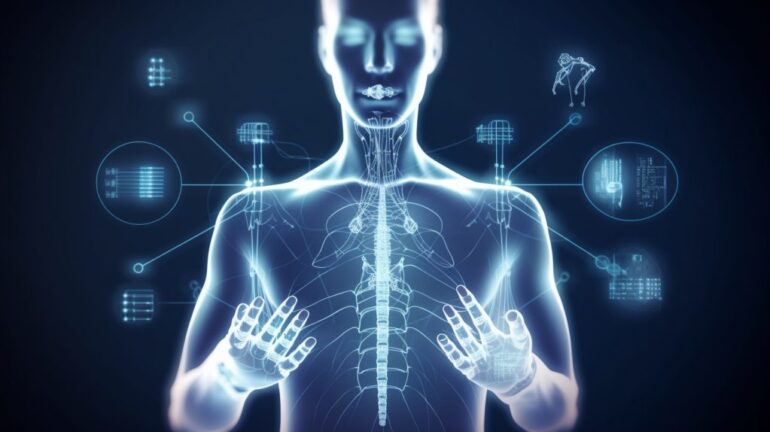TL;DR:
- AI-generated medical content demands thorough validation for accuracy.
- Study led by Hong-Uyen Hua reveals potential pitfalls of AI-generated references.
- Research team compares quality of ophthalmic scientific abstracts from different AI chatbot versions.
- Quality of abstracts is comparable, but authenticity of references improved in updated chatbot.
- Hallucination rate of references remains consistent across versions.
- Hua emphasizes cautious scrutiny of AI-produced medical content before academic or educational use.
Main AI News:
The intersection of artificial intelligence (AI) and medical research has opened new doors of exploration, but a recent study underscores the importance of cautious engagement. Hong-Uyen Hua, MD, a proficient surgical retina fellow, led a comprehensive investigation that echoes a clarion call for vigilance among clinicians and researchers. The allure of AI-generated content is undeniable, yet a critical aspect often remains neglected: the necessity for meticulous verification and validation of the medical knowledge AI disseminates.
Hua, in collaboration with the eminent Danny Mammo, MD, and a team affiliated with the prestigious Cole Eye Institute at Cleveland Clinic Foundation, elucidated a pivotal caveat surrounding AI’s role in medical discourse. The team illuminated the burgeoning prominence of AI chatbots and their transformative potential for patient education and scholarly endeavors. However, the meticulous examination of AI-generated abstracts and references remains uncharted territory, replete with potential pitfalls.
To address this void, Hua’s research unit embarked on a comprehensive cross-sectional comparative analysis. This endeavor sought to scrutinize and juxtapose the quality of ophthalmic scientific abstracts and references produced by varying iterations of a widely employed AI chatbot. The study’s ambit encompassed two versions of the AI chatbot, tasked with generating both scientific abstracts and references spanning seven ophthalmology subspecialties.
Methodologically robust, the study enlisted modified DISCERN criteria and performance evaluation scores, leveraged by two discerning evaluators, to assess the abstracts’ caliber. Adding depth to the analysis, two AI output detectors were also engaged to assess the abstract’s authenticity. Moreover, a distinctive metric – the hallucination rate – was formulated to gauge the verifiability of references produced by the earlier and updated versions of the chatbot.
Insights from the Comparative Study
The inquiry yielded illuminating insights. The mean modified AI-DISCERN scores, denoting the quality of chatbot-generated abstracts, stood at 35.9 and 38.1 out of a possible score of 50 for the earlier and updated iterations, respectively. Although seemingly marginal, the nuanced difference is a focal point for the evolving AI discourse. A more compelling revelation emerged through the prism of AI output detectors: the earlier version exhibited a mean fake score of 65.4%, while its updated counterpart showed a stark reduction to 10.8%. A statistically significant revelation, it underscores the strides made in enhancing the AI’s authenticity.
Delving deeper into verifiability, the investigators gauged the rates of “hallucination” within the references. Here, both iterations demonstrated comparable figures, with a mean hallucination rate of approximately 30%. This parity is pivotal, shedding light on the consistent challenge posed by AI’s inability to discern subtle nuances and contextual intricacies within the scientific literature.
Implications for the Medical Community
The findings bear considerable significance for the medical fraternity. While the quality of abstracts generated by distinct versions of the chatbot remained akin, the cautionary narrative pertains to the prevalence of citations imbued with an aura of authenticity but, in fact, being mere “hallucinations.” In this intricate landscape, Hua and colleagues proffer an imperative caveat: the transformative potential of AI necessitates a rigorous, discerning approach. Any medical content birthed by AI, while promising, requires diligent scrutiny and cross-validation before being harnessed for educational or academic pursuits.
Hua’s poignant observations encapsulate the essence of this study’s import. As generative AI surges into novel realms of medical research, the ability to create references, often laden with seemingly authoritative insights, brings forth a novel dimension – a concept known as “hallucinations” in AI parlance. This venture into the AI realm has unearthed its limitations – an inability to traverse the intricate nuances of scientific discourse. As AI’s evolution continues, there is an imminent imperative for robust validation mechanisms, as current AI detectors grapple with the complexities, particularly in the context of newer AI chatbot iterations.
Conclusion:
The study underscores the necessity of diligent validation in the realm of AI-generated medical content. While AI’s potential for enhancement is evident, its limitations in discerning nuances warrant comprehensive scrutiny. The market should recognize the need for accuracy validation mechanisms as AI’s role expands, ensuring the credibility of AI-powered medical discourse.

